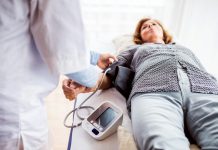
In a small village near Guadalajara, Mexico, 70-year-old Maria Magdalena Valencia Juares, known as Elena, faced a daunting challenge. Living atop a hill, Elena had to climb 120 stairs to reach her home.
This daily task became an insurmountable hurdle after she suffered a stroke in 2021, leaving her isolated and struggling with her mental health, compounded by the loneliness of the COVID-19 pandemic.
Elena, not formally educated, relied heavily on social interactions for her wellbeing. The stroke-induced muscle weakness and fall risk made it difficult for her to maintain these connections.
Her daughters, Noemi Armenta in Los Angeles and KC Hostetler in Alaska, witnessed from afar the impact of the stroke on Elena’s mental state. They began seeking solutions to improve her mobility and mental health.
Elena’s situation was dire. “Before the iStride treatment, I was isolated. Every day was a struggle,” she said. Hostetler discovered the iStride device online, a breakthrough invention by Kyle Reed, an associate professor of mechanical engineering at USF, and licensed by Moterum Technologies Inc.
This device, designed for stroke patients, helps improve walking ability by strapping over the shoe on the unaffected side of the body. Its unique wheels create a corrective motion during each step, strengthening the stroke-impacted leg and enhancing gait.
Hostetler and Armenta brought Elena to North Carolina for therapy with the iStride device. The therapy involved basic movements like shifting from sitting to standing and walking repeatedly using the device, gradually enabling Elena to walk without a cane.
Reed explains, “The iStride gait device challenges the wearer by destabilizing the unimpaired leg, promoting increased use of the affected side.” This results in a change in gait pattern, making walking easier after each session, with increased speed and reduced asymmetry.
Following about a month of therapy, Elena returned to Mexico, managing to climb all 120 stairs to her home and danced joyfully at the top. “She was dancing. She hasn’t danced in years,” Hostetler remarked, highlighting the transformative impact of the iStride on Elena’s life.
The success of the iStride is not just a singular story. Reed’s study in Frontiers in Neurology involved 18 stroke survivors who underwent the iStride therapy.
Remarkably, within one month of starting therapy, their gait speed improved by 50%, and these improvements remained largely consistent a year later.
The average patient’s walking speed increased by 0.21 meters per second, a significant improvement for stroke survivors.
This research represents one of the most substantial improvements in gait speed for stroke survivors ever reported in an academic journal.
Initially met with skepticism due to its impressive results, the study was eventually accepted after reviewers saw videos demonstrating the dramatic improvements in the subjects’ walking abilities.
Lauren S. Rashford, president of Moterum Technologies, emphasized the paradigm shift in stroke treatment brought by the iStride, highlighting the power of hope and personalized patient journeys in fostering recovery.
Elena’s story, along with the scientific evidence backing the iStride, offers new hope for stroke survivors worldwide, demonstrating the potential for significant improvements in mobility and quality of life.
If you care about stroke, please read studies that diets high in flavonoids could help reduce stroke risk, and MIND diet could slow down cognitive decline after stroke.
For more information about nutrition, please see recent studies about antioxidants that could help reduce the risk of dementia, and tea and coffee may help lower your risk of stroke, dementia.
The research findings can be found in Frontiers in Neurology.
Copyright © 2024 Knowridge Science Report. All rights reserved.



